5 Ways To Keep Your Feet Happy While Using a Standing Desk

Standing and walking while working leads to many health benefits, but it is key to take care that your muscles don’t get sore. Pain and strain in your feet can cause you to sit more, even though your goal is to sit less. So, what can you do to prevent this dilemma? Our number one recommendation is to use a standing mat, but you’ll also find many other helpful tips explained below.
1. Standing Mats Help You Stand At Your Desk Longer
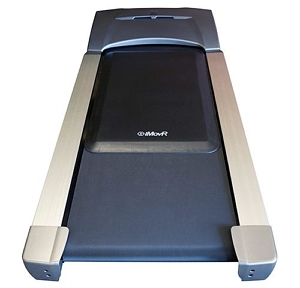 The single most valuable device to help with foot relief for standing desk and treadmill desk users is a quality anti-fatigue standing mat. Standing for long periods of time can lead to serious foot fatigue, and a good mat will significantly extend the amount of time you can work at your standing desk without pain. But there’s a difference between kitchen mats masquerading as office standing mats and solid polyurethane anti-fatigue mats designed specifically for use with a standing desk. Read about the differences, and the best products on the market today, in our comprehensive Standing Mat Comparison Review.
The single most valuable device to help with foot relief for standing desk and treadmill desk users is a quality anti-fatigue standing mat. Standing for long periods of time can lead to serious foot fatigue, and a good mat will significantly extend the amount of time you can work at your standing desk without pain. But there’s a difference between kitchen mats masquerading as office standing mats and solid polyurethane anti-fatigue mats designed specifically for use with a standing desk. Read about the differences, and the best products on the market today, in our comprehensive Standing Mat Comparison Review.
A proper anti-fatigue mat will also offer other health benefits, such as reducing spinal compression and keeping your entire body more limber each day. There’s an added bonus, too. Good mats like the iMovR EcoLast Premium Standing Mat engage your feet in what’s called proprioceptor stimulation: your brain is constantly aware of your body’s position and automatically activates different muscles to help you stay balanced. 100% polyurethane anti-fatigue mats provide a springy surface that increases stimulation of your feet’s proprioception nerves, thus improving your balance throughout the day.
If your have an office treadmill, iMovR EcoLast TreadTop Standing Mat is specifically designed to allow you to stand on your treadmill in complete comfort. As long-time treaders, we know that when many workers are done walking, they don’t feel like bringing the desk back down to sitting position or moving to a different desk. However, working with the motor stopped for any length of time can lead to serious foot fatigue, as the hard rubber belt and plastic deck have no give. Having a standing mat to place atop your treadmill will alleviate soreness and allow you to continue working without having to readjust your workspace every time you take a break from walking.
1. Pay Attention to How Your Feet Feel

Users unaccustomed to standing or walking for long periods of time will experience sore feet when they start a new regiment. If you’re still getting used to your standing desk or treadmill desk, you can soothe sore feet with ice packs, soak them in Epsom salts (makes them feel pampered, too), get foot massages, use in-shoe gel soles, and so on.
One of our favorite solutions is the Porcupine Massage Ball that you can use mindlessly while watching TV in the evening. It has sensory nodules that act as mini acupressure points when rolled along the foot (or anywhere on the body). These nodules can penetrate down to the muscle layers, helping increase blood circulation, reduce stress, and comfort the underlying tissues. The Porcupine Massage Ball is ideal for self-massage or with assistance to treat back pain, ease tension, stimulate the nerves, and energize the whole body.
3. Try to Mix it Up

Another foot relief device we always recommend to treadmill desk and standing desk users alike is the Humanscale Foot Machine. Unlike other footrests and foot rockers, this one is properly designed to rotate right where your ankle rotates.
Keep one of these under your desk while sitting and gently rock back and forth on it after long sessions of walking and/or standing. It will feel good on the feet and calves and keep them loose and limber so that you can have even longer treadmill sessions without causing the small muscles in the foot or any of the larger leg muscles to suddenly seize up 20 minutes after ending your treadmill session.
4. Don’t Forget to Stretch

Experts recommend that you not only take time to stretch before and after each standing or walking session, but also in between as you feel the need. A good rule of thumb is every half hour.
To reduce muscle soreness, stiffness, and pain while accelerating muscle recovery and dispersing the effects of lactic acid following activity, many therapists recommend getting a good soft tissue stretch. This will also promote circulation. You can do so with the aid of an inexpensive, handy device like the Tiger Tail (our #1 choice), The Stick (great for travel) or even a simple foam roller.
5. Get The Right Shoes For Standing Or Walking

Walking at 1-2 mph in the office might seem like a casual enough process, but treadmill desk users need to think of their feet the way professional runners do if they want hours of comfortable walking. The best strategy for staving off foot fatigue is to invest in a new pair of walking shoes that you only use on your treadmill. This will keep dirt from getting on the belt and winding up in the mechanical works (creating friction between the belt and the deck) or in the motor area. Doing so will also protect your feet, especially if your dress shoes aren’t the most comfortable to wear.
If you’d rather not bother with changing shoes when you switch to the treadmill desk, just be sure the soles of your shoes are clean. Consider putting a small rug next to the treadmill for wiping your shoes.
Whatever you do, WEAR SHOES! We’ve seen pictures on the internet of barefoot walking enthusiasts going shoeless on their treadmill desks. We also know of people who’ve gotten bad infections from walking barefoot (and worse, running) on their treadmills.
Need more help with your office setup? Read our 10 Ways to Improve Your Office Ergonomics and our in-depth primer on the Differences Between Ergonomics and Ergodynamics.

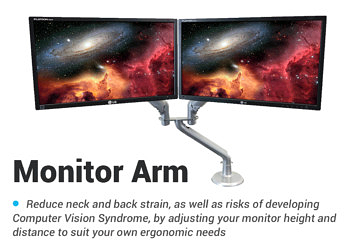
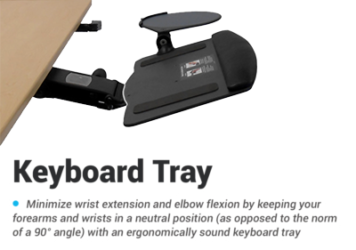
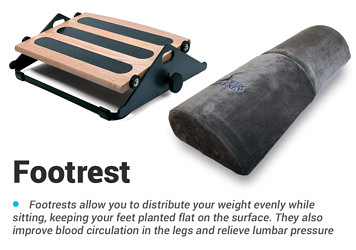
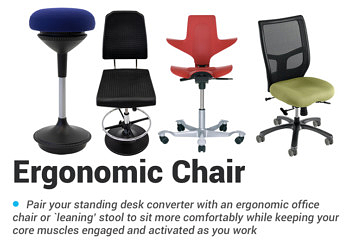
0 Comments
Leave a response >